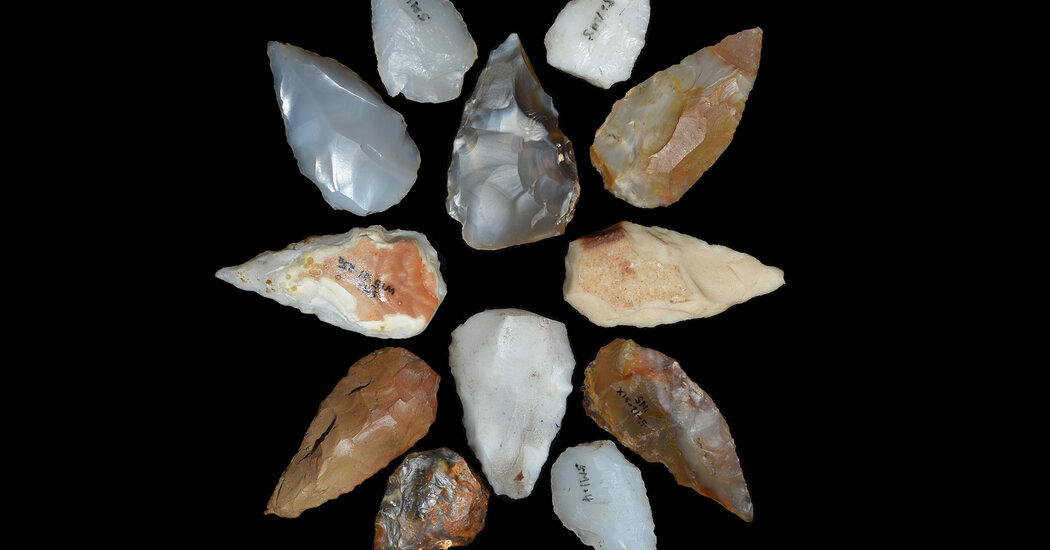An archaeological site in Ethiopia revealed the oldest-known arrowheads and the remnants of a major volcanic eruption.
In 2002, a crew of paleoanthropologists were working in northwestern Ethiopia when they came across chipped stones and fossilized animal bones — telltale signs of a place where ancient people had once lived.
After years of excavations, the researchers discovered that hunter-gatherers had indeed lived there 74,000 years ago. As described in a study published Wednesday in Nature, these ancient humans were remarkably adaptable. They made arrows to hunt big game. And when their world was turned upside down by a giant volcanic eruption, they adapted and survived.
That flexibility might help explain why humans of the same era successfully expanded out of Africa and settled in Eurasia, even when many earlier forays had failed. “This points to how sophisticated people were in this time period,” said John Kappelman, a paleoanthropologist at the University of Texas who led the new study.
At the site, known as Shinfa-Metema 1, the researchers uncovered thousands of bones, some covered in cut marks, from gazelles, warthogs and even giraffes, suggesting that the humans were hunting these species.
The team also found 215 fragments of ostrich eggshells. It’s possible that the people who occupied the site ate the eggs, or used the shells as canteens for storing water. The scientists were able to precisely date the shell fragments, which held trace amounts of decaying uranium, to 74,000 years ago.
Around the same time, a volcano in Indonesia called Toba unleashed vast amounts of ash and toxic gases that spread around the world, blocking the sun for months.
